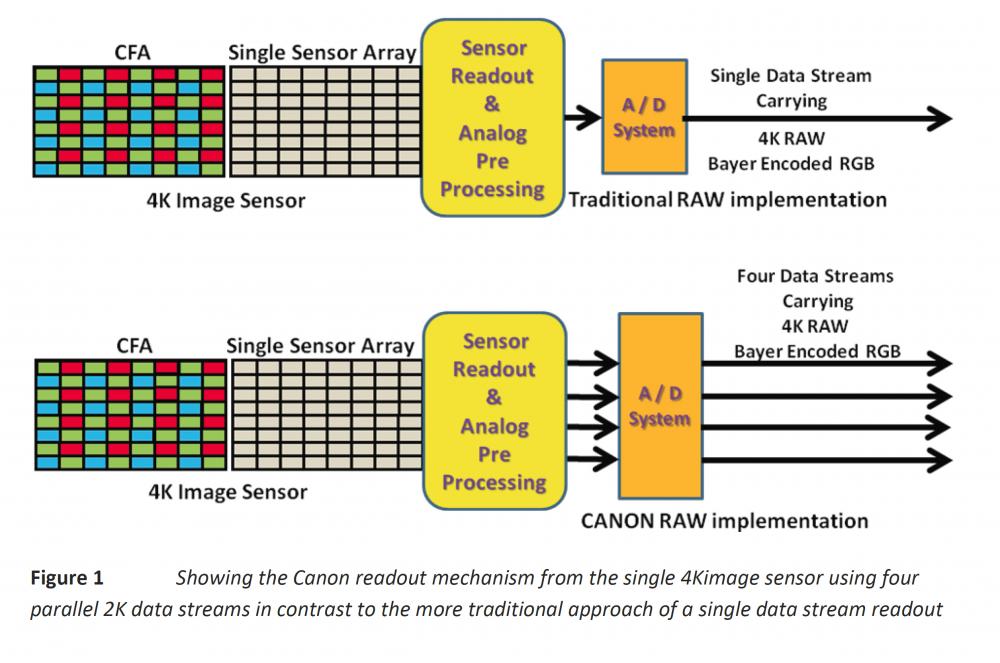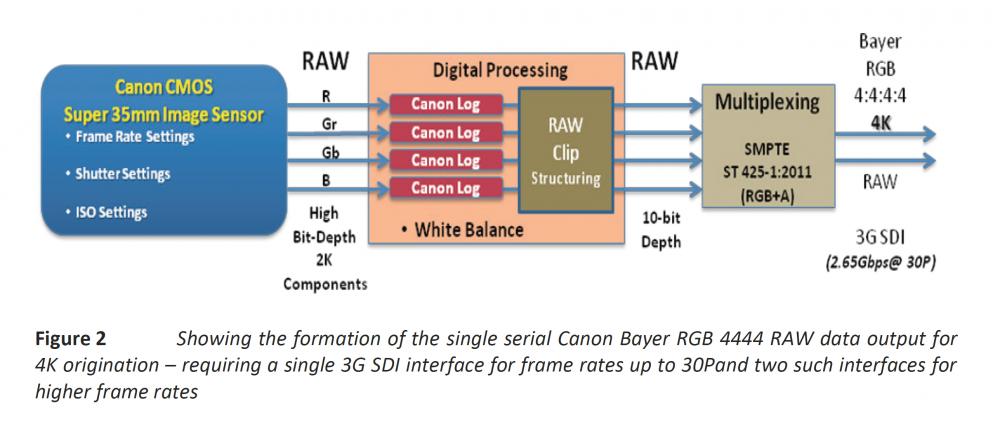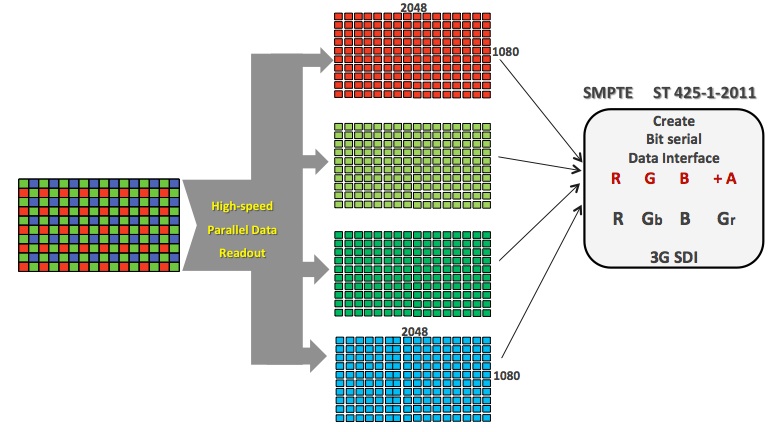
Kino
Members-
Posts
242 -
Joined
-
Last visited
Content Type
Profiles
Forums
Articles
Everything posted by Kino
-
This stuff just writes itself . . .
-
I love the URSA Mini Pro bodies and am delighted they chose to keep it. I never had the pleasure of owning one, but I would definitely purchase the shoulder mount and the EVF at some point. I hate shooting without an EVF in bright sunlight. Like the FS7, the UMP form factor reminds me of the days when we shot on film with 16mm cameras. All you get from RED/Kinefinity/ZCAM is a shoe box with an articulating screen on top. What am I supposed to do with that?
-
Even Lok got one on "First Lok." Here, he shows why it is Canon's best vlog cam . . . until it gets too warm and you have to switch hands. https://www.youtube.com/watch?v=vbqtkR_yyjM
-
Canon 9th July "Reimagine" event for EOS R5 and R6 unveiling
Kino replied to Andrew Reid's topic in Cameras
I don't think it is going to win any DR contests, if that is what you mean. But if you keep the camera within its limits, it can generate some decent footage with no apparent noise: http://vimeo.com/428556668 http://www.youtube.com/watch?v=UskTIP40HTQ But, yes, overall the footage has been rather disappointing from a "filmic" perspective. Most of what we have seen demonstrates limited DR (around 10-11 stops) and a "thinning" of the color bit depth: Some of that poor quality probably has to do with user error or lack of proper grading options. Otherwise, it is Canon's way of telling us to buy the 1DX III for video. -
There are many things to consider beyond image quality and spec sheets if you have never owned a BM camera. I believe you mentioned on another thread that you owned a RED Helium previously and that you shoot 8K for display manufacturers. Well, this is different. You are leaving the castle and joining the peasants. Since we are talking about your livelihood, I would not purchase a $10K BM camera without an extended warranty of 3-5 years. Now if you are selling stock footage at 8K RAW, you may have a problem with selling BRAW as it has not enjoyed the universal adoption of R3D files until very recently. I think BM released BRAW plugins for Adobe and Avid just last year. If you want to rent your camera out for the maximum fee, the RED is also a better choice in that regard. Many (non-technical) people in the industry have never heard of BM, but they all know and want RED. This is due to ignorance perhaps, but it is reality. The URSA 12K looks very impressive in J.B.'s controlled skin tone tests. Colors and skin tones are solid and the noise pattern is so finite that you can hardly see it. But the outdoor shots Grant showed in his presentation were nothing special in terms of DR or color. I would wait a few weeks until you get more test footage in challenging outdoor conditions.
-
Yes, I agree. But it does even more than this. I believe Grant said RGB (444) output in 8K! That is far more than what Canon and Sony can offer you on their high end cameras with a similar RGB recording function.
-
I think this is way beyond the RED Komodo, which is just an entry-level gimbal camera. It is aimed more at the Kinefinity, Sony and Canon cameras in that $10K segment along with the RED Helium 8K, which is more than double the price. The main issue is that it is a missed opportunity to offer FF. As it is, the URSA MINI PRO G2 has more DR and is also S35 with the same body (interchangeable lens mount, etc.), and it produces stunning footage in 4.6K RAW 60 fps and 4K RAW 120fps at $6500. That camera has a dual-gain architecture and has been nearly perfected over several iterations. The only major issue is the red-channel clipping on tail lights, for example. Other than that, it offers a very compelling feature set at a much better price.
-
I hope this engineer doesn't work for Sony, since he seems to get around these days . . .
-
Kinefinity Terra 5K is "not finalized on shipping date," according to their website: http://www.kinefinity.com/shop/terra/?lang=en It is still a hypothetical camera not in release, despite promises of shipping so long ago. As for the 6K sensor, it's the same as the Kinefinity 6K and has the worst rolling shutter you have ever seen in a cinema camera. For those who want 6K resolution that debayers to proper 4K, there are only going to be two realistic choices: RED and the EVA1. I think Panasonic has done something amazing and noteworthy. It's a very ambitious camera and the Vimeo footage is truly gorgeous (despite the fact that we are not even talking about the RAW 5.7K output as of yet):
-
Panasonic is now claiming 12 Bit RAW 5.7K output to Odyssey and Shogun using 6G-SDI output to CDNG files (up to 30fps) available in early 2018: I believe that if you already have an Odyssey RAW package, it will be included. I'm not sure if it's a free firmware upgrade on the Panasonic side of things. No mention of file sizes, but if previous experience with Odyssey and 4K RAW is any indication, they will be huge! I'm guessing around 400-500 MB/S or larger given the 17.25 megapixel sensor.
-
The 1DC produces a gorgeous image to rival any digital cinema camera. No doubt about it. You guys are lucky to have that camera! As for 10 bit, I don't think it would have been possible to do 4K 10 bit intraframe in a completely weather-sealed body as the 1D. There would be way too much heat generation. Unless, what you mean is that you prefer a 10 bit highly-compressed codec to MJPEG. The processing power was simply not there for such compression and Canon had not developed any internal 10 bit 4K codecs before the C300 II.
-
I would imagine that the 1DX and 1DC were designed together as part of one platform, but released in a staggered way so as to maximize profits for the same product. Even Sony has become the master of this! Moreover, this does not take away from the originality of the 1DC's approach to 4K intra-frame video using MJPEG. No other DSLR manufacturer offered internal intra-frame 4K in those early years. Combined with the 4:2:2 subsampling, large pixel pitch, and 1.3 crop factor, this accounts the 1DC/1DXII's superior image quality compared with other 8-bit DSLRs. And, just as you stated above, I even prefer its image to the C300 II in some ways.
-
I always thought the 1DC was way "beyond Canon's imagination" for 2012. Well, except for the $12K+ price, which is very much part of their unique "imagination." An 8K DSLR is possible for a price, but it will be more expensive than the original 1DC considering the current price of implementing such tech.
-
I agree that the 1DC is a truly special camera, but the C200's release means there won't be any 1DC II, at least not this year. It would be hard to sandwich a 1DC II between the 1DX II and C200 without undermining sales for those two cameras. As a result, Canon DSLR shooters will have to content themselves with the 5DIV or 1DXII in the meantime. The more interesting question is what they might do with the commercial release of their 8K sensor designed for their higher-end cinema EOS cameras. Last time in 2012, the 1DC and C500 were released within a few months of one another as Canon's first 4K video offerings. Will we see a similar pattern with Canon 8K: one experimental and revolutionary DSLR and one pro cinema camera?
-
I cannot wait for "Apprentice: White House Edition."
-
Lovely cinematography as always Ed. The grade is similar to some of your very filmic MX footage (the Cuba one is particularly gorgeous, in case people here have not seen it): It's a different kind of look for the F65, as I don't see that type of desaturated look (in this case, with a heavy teal/blue modern grade) applied to this camera very often.
-
Canon will typically impose minimum inventory/stock numbers on dealers when approving of any camera price drop. This means B&H had a certain number of 1DCs to sell at that price, as the minimum they would have to take from Canon would be something like 10 units at the very least for such a popular store. Once they sold out, the price went back up.
-
Ed, you can watch the C500 in action in the current IMAX film, A Beautiful Planet, which was shot entirely on the C500 (and the 1DC for time-lapse): There is also an interesting article in American Cinematographer on why they chose the C500's uncompressed 4K RAW over other cinema cameras that they tested: http://www.theasc.com/site/wp-content/uploads/2016/06/AC-A-Beautiful-Planet.pdf
-
Yes, ISO and WB are set or "baked-in" to a certain degree, as seen in Canon's white paper: Of course, WB can be easily manipulated in the RMF files in post as with any RAW format. As for ISO, like the Panasonic Varicam, the C500 employs analog gain control (as Policar already mentioned on page one of the thread). Combined with its noise performance, this allows for outstanding low-light abilities for a cinema camera. I'm not here to defend Canon's, Sony's, RED's or any other manufacturer's definition of "RAW." I would only point out that Canon's Cinema RAW offers some unique features: Compared with conventional approaches, this image processing chain results in improvements and advantages in the following areas relevant to the four color data streams: color separation, demosaicing, resolution, and anti-aliasing. This is why some have noted that the C500's 4K resolves a very high level of detail per pixel (something that is also true of the C300 II). Moreover, like ARRIRAW, Canon Cinema RAW reaches an insanely high data rate. In fact, a Canon RMF file delivers more data per frame (over 11 MB) than almost any other 4K RAW format with the exception of ARRIRAW in open gate, which matches Canon’s data rate of 11 MB per frame, but at a lower resolution than 4K. For these reasons, and despite fixing ISO at the time of shooting, Canon RAW is a formidable format that was apparently designed as the antithesis to Redcode, which has relatively low data rates, no analog gain, poor ISO/noise performance, and high compression in the green color channels. In this way, you can think of Canon RAW as diametrically opposed to Redcode. The latter has its own advantages of course in terms of reducing storage and unlocking 5K, 6K and 8K recording in a very portable camera package and easily manageable RAW format for editing. Nevertheless, I would say that RED has a lot more to answer for than Canon when it comes to defining its format as "RAW," considering how much sensor data is discarded in Redcode compression.
-
I do not see the C500 support as particularly high on the Atomos agenda. I could be wrong, but the Inferno is simply the wrong device for capturing C500 footage in all its different output modes, even with the two SDI connectors. They may get there someday, but it's a huge gamble to assume that everything is coming in future upgrades. DVXuser is one place to look for how the C500 works or doesn't work with Atomos recorders. The Odyssey may be a bitter pill for some, but it is one you have to take to work with the C500. The extra fee for the RAW license is unfortunate, I agree. Of course, without the license you can still shoot the camera in 4K ProRes (up to 30p) and 2K 12 bit RGB 4:4:4, which upscales incredibly well to 4K as both are derived from the same 4 x 2K lattices I mentioned above. Compare 4K and 2K (here only at 10 bit) starting at 1:57 in this test by Hurlbut: Aside from the Human Voice trailer I linked above, here are some other examples of 2K 12 bit RGB 4:4:4 (shown in HD without upscaling): There are many more of those lens tests from Cooke Optics using the C500's 2K RGB mode on Vimeo. Cooke also has some slow motion examples shot in 60fps (10 bit RGB) and 120fps (10 bit YCC) and recorded on the Codex. The Odyssey for its part records onto Samsung 850 EVO drives that cost $320 for 1TB or you can go for the Samsung 850 PRO 1TB at $420 (or any of the 850 Pro line that are smaller and cheaper). That will give you one hour of 4K RAW at 24p, 2.5 hours of 4K ProRes 4:2:2 HQ, or 5.5 hours of 4K ProRes 4:2:2 LT. In terms of cost per GB, I would say that is a very competitive price when compared with RED mini-mags or CF 2.0 cards, for example. You can also take your SSD, stick it into a drive bay, and start editing right away. I do agree that the battery solution is not ideal, but the optional battery adapter on the back works with Canon C300/C500 batteries and gives you around 1.5 to 2 hours of continuous recording from everything I have read. It's a much lighter solution than attaching a V-lock on rails. You would be carrying the same battery that the camera uses, so I think it is an ideal setup in that sense. You can also mount the recorder to the camera in numerous ways depending on if you want to go with rails or not.
-
CinemaDNG is Adobe's RAW format (for example, the BMPC-4K records RAW using CDNG), but it is only promised in a future Atomos firmware update for the Inferno (as mentioned on their website). When it is released, you will be able to record up to 30fps from the C500 in CDNG on the Inferno. Nothing else has been specified regarding CDNG recording in the Inferno. For example, will it retain the 10 bit logarithmic RAW signal, which is crucial to unpacking Canon Cinema RAW in post? With RMF, you can process your files to ensure proper unpacking of the 10 bit log. I'm not sure how it will work with CDNG. What will happen with the four lattices of the Bayer sensor data I referenced above? These data streams must be recorded properly to ensure effective demosaicing in post to retain the C500's outstanding resolution and anti-aliasing performance in 4K. As for 2K 12 bit RGB 4:4:4, it is not even supported in the Inferno, let alone ProRes 4:4:4:4. Some of the links I posted above go into the specifics and unique attributes of Canon cinema RAW, which is quite different from almost any other RAW implementation since the Canon RAW has much larger data rates (moreover, ISO is baked-in and white balance is set). For this reason, I would prefer to remain within Canon's RMF workflow (or DPX, as the Odyssey records the 2K 12 bit RGB 4:4:4 into this compatible format) as it is crucial to extracting the most faithful recording from the 3G-SDI data streams. Here is a section from one of Canon's white papers on Canon Cinema RAW in the C500: "Management of C500 Output Data Rate – Logarithmic Encoding Considerations of RAW data rate outputs from the EOS C500 differ from that of most other single sensor cameras – and they are two-fold: 1. In close consultation with no less than five separate digital recording manufacturers we established a consensus on a maximum camera data rate output that could be managed by each (even though each had different recording strategies) 2. Very important – Canon specifically wanted to use the SMPTE ST 425-1:2011 serial 3G SDI interface as the transport mechanism for our RAW data – in order to facilitate: o A standardized (and universal) serial digital delivery to each of the disparate recorders o Passage of the camera output RAW data into broadcast 4K/2K/HD infrastructures that utilize standardized 3G SDI system elements (camera CCUs, routers, encoders etc) Accordingly, the RAW data rate output is constrained to less than 3Gbps for both 4K and 2K having frame rates up to 30P – so only one 3G SDI interface would be required. This data rate was achieved without resorting to compression by constraining the camera output to a bit depth of 10-bit for the 4K RAW and to 12-bit for the 2K RAW – as outlined in the following: Canon 4K: 4444 Bayer RAW Data rate @ 30 fps 2048 x 1080 x 4 x 10 x 30 = 2,654,208,000 bits/ second Canon 2K: RGB 4:4:4@12 -bit Data Rate at 30 fps 2048 x 1080 x 3 x 12 x 30 = 2,388,787,200 bits / second Both of these data streams fit comfortably within the 3G SDI interface standard. For higher frame rates – up to 60P – the elevated data rates (still less than 6 Gbps) will require two 3G SDI interfaces. To meet those two bit-depth constraints without compromising restoration of the higher bit-depth of the image sensor output in postproduction resort was made to an alternative bit rate reduction strategy – namely, logarithmic encoding of the image sensor linear representation (according to the mathematically prescribed Canon Log). Specifically, the high bit depth of the image sensor digital outputs are logarithmically transformed to a 10-bit depth for the 4K mode, and to a 12-bit (with 10-bit as a selectable option) for the 2K mode. This is a completely reversible process. While Canon does not disclose the bit depth of our A/D converter – we do affirm that the linearization process (de-Canon Log) can reproduce the linear representation at 12-bit, 14-bit, or 16-bit (DPX or Open EXR)." http://learn.usa.canon.com/app/pdfs/white_papers/White_Paper_originatinghighqualityc500.pdf (bold emphasis added)
-
While most people associate the C500 with famous American DPs like Hurlbut or Jeff Cronenweth, we should not forget to mention the C500 work shot by CML founder Geoff Boyle, BSC: It's impressive to read that this was all shot with EF glass. Here are some of Boyle's lens tests using the C500: http://www.cinematography.net/CML-CMIR-Lens-Tests.html His over and under exposure results as part of the 2015 CML camera tests are also available: http://www.cinematography.net/edited-pages/C500-uwe-2015.html There is a wealth of useful info there on the camera, especially with regard to the differences in overexposure when dealing with tungsten vs. daylight. Unfortunately, the 5,000 ISO test of the two low-light champs, the C500 and the Varicam, is no longer available through the online link.
-
No problem. I'm glad to help in any way I can. The C500's HD 120fps is output at 10 bit 4:2:2 YCC in DPX (uncompressed) and MOV formats that should be supported without the RAW upgrade. However, I would check with Mitch Gross or someone else at CG to make sure, as it seems important for you. From what I have read and seen, the RAW 4096 X 1080 is the best 120fps footage from the camera. This is different from 120fps "Half RAW" 4096 x 2160, which leads to a loss of vertical resolution.
-
4K RAW @ 60fps is recorded in a frame-interval system, where even frames go to one SSD while odd frames end up on the other. That's the only way for the C500 to record HFR in Canon's RMF (Raw Media Format), as it utilizes two 3G-SDI connectors to transfer the massive data rates I noted above. Recall that each 3G-SDI connector in the C500 is outputting 4 2K streams, which have to be recombined to create the 4K or 2K RMF file recorded by the Odyssey: At 60fps using frame-interval recording on dual SSDs, you have two sets of these 4x data streams. That would explain the insane 700 MB/s data rate. [Btw, the two green data streams or lattices, which form an over-sampled "super green," also have implications for suppressing aliasing and enhancing resolution and MTF, properties that are evident in C500 footage at both 2K and 4K: http://www.provideocoalition.com/nab-2012-canon-c300-image-processing/] The Odyssey allows for this dual SSD recording as does Codex, for example. Atomos states that the Inferno will not ship with any type of RAW recording. Instead, they are promising 4K RAW in future firmware updates, but only up to 30fps. The Inferno does list 4K ProRes up to 60 fps: https://www.atomos.com/shogun-inferno Aside from the lack of 4K RAW 60fps and HRAW 120 fps on the Inferno, you would also be missing a whole bunch of other functions, including 2K 120 fps (10 bit YCC) and 2K 12 Bit RGB 4:4:4, which is one of the C500's headline features. Both are included on the Odyssey (120fps 1080/2K is not listed here but definitely supported): https://www.convergent-design.com/canon-eos-c500 I understand that the Inferno will have a lovely HDR display, better sound options, and a friendlier interface, but it is simply not suited to unlocking the C500's numerous recording modes. More info on the C500's workflow can be found all over the web. However, not all of it is reliable or up-to-date so it's best to read as broadly as you can and to check for Canon and Odyssey firmware updates to see what features are currently supported. A primer on Canon's unique approach to cinema RAW can be found at these links, including info on the diagram posted above: http://blog.michaeldanielho.com/2014/02/understanding-how-canon-cinema-raw-works.html http://blog.abelcine.com/2012/11/05/what-exactly-is-canon-raw/
-
The C500 does 60fps in RAW DCI 4K (4096 x 2160), but it requires two SSDs and a data rate of over 700 MB/s! By comparison, that is 7x the 1DX II's 60fps data rate of 100 MB/s (800 Mbps). But at 120fps HRAW, indeed you are only getting half the vertical resolution at 4096 x 1080, with two options as to how you conform the material in post, as Andrew mentioned in his review: http://www.eoshd.com/2016/06/4k-raw-120fps-3k-say-hello-second-hand-canon-c500/ The problem with the Atomos recorders is that they only have one SSD. This means that they can't record the C500's 60fps RAW or 120fps HRAW. I believe Atomos lists 60fps ProRes recording from the C500, but I have not seen any user reports confirming this. In any case, if you own a C500 (or one of the Sony cameras that does HFR RAW), you need the Odyssey. As for Scorsese film, I only know that they used the C500 on the drone shots. It's entirely possible they shot that slow motion sequence in HRAW 120 fps. I'll have to go back and look at it, but I don't remember any distracting aliasing in the image (which I would expect, depending on how they dealt with it in post). Suffice it to say, you would not want to use too much footage in HRAW 120fps. A little here and there is fine. The motorcycle documentary I linked to above used the C500 HRAW 120fps extensively, if you want to see what it looks like in a production.


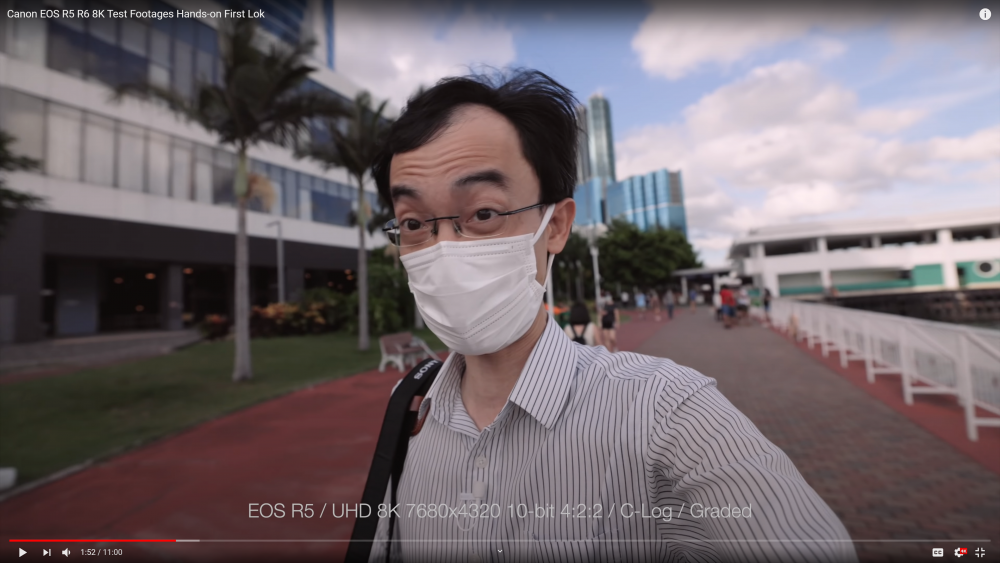
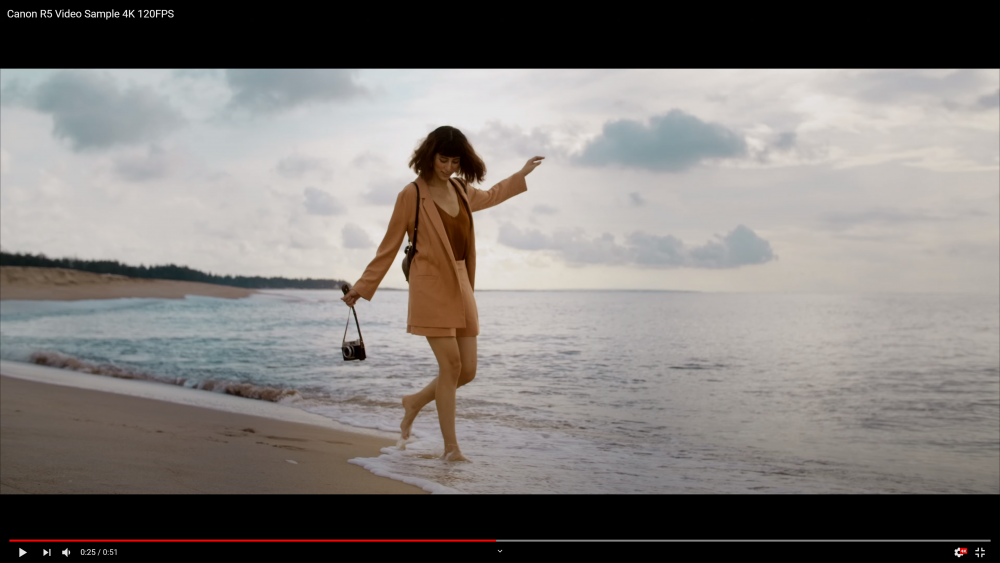
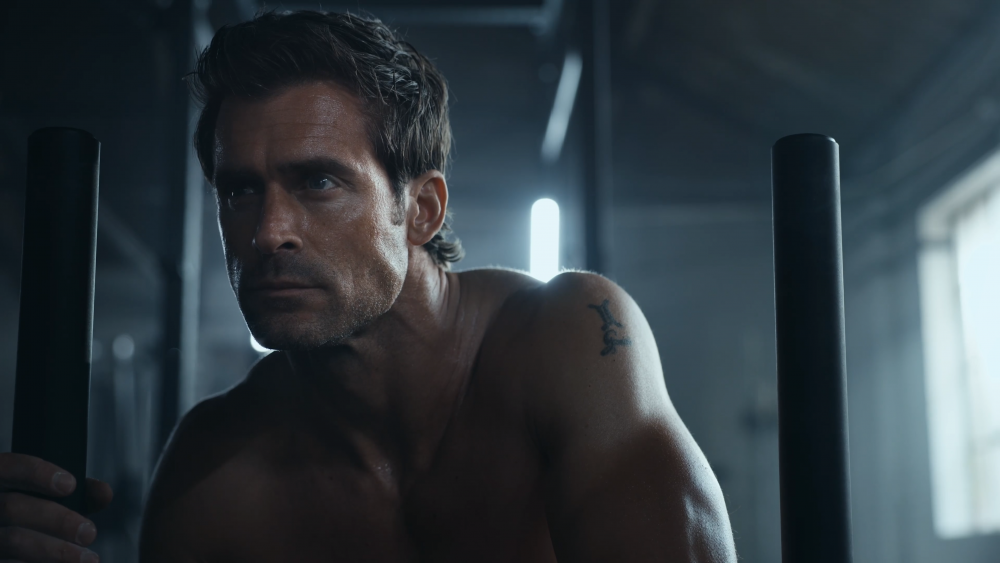
.thumb.png.f0810788dc7e56f5cdafb30969740a50.png)
.thumb.png.b997d3a6ed4a77204ebb37e80e567d4b.png)
.thumb.png.a8702cc66c28dee87714bcdd70a4ff73.png)
.thumb.png.36599cdf5c18cec19b3976ed8d7f762c.png)
.thumb.png.9dfa38acd633e44f2a00a673399b5720.png)
